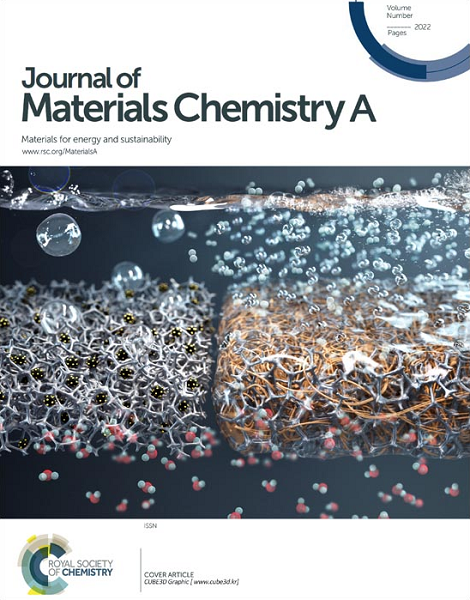A critical review on Recent advancement on Metal -Organic Frameworks (MOFs) for CO2 capture, storage and utilization
IF 10.7
2区 材料科学
Q1 CHEMISTRY, PHYSICAL
引用次数: 0
Abstract
One of the biggest problems our world is currently facing is global climate change brought on by rising atmospheric CO2 levels. The creation of technology that encourage "negative carbon emissions" is necessary to address this worldwide catastrophe. As the shift to more sustainable energy infrastructures advances, carbon capture and storage (CCS) and CCU (Carbon capture and utilization) technologies are essential for removing CO2 from current emission sources, such as industrial and energy production facilities. Metal-organic frameworks (MOFs) are a new class of solid porous materials that have attracted a lot of interest recently in addition to conventional inorganic adsorbents. MOFs as an adsorbent are a rapidly expanding subject due to their versatility in structure and function. Innovation in carbon capture solutions is still being fuelled by the promising performance of MOF-based technology. An ever-increasing number of current publications and citations, as well as the ongoing expansion of study scope and researcher interaction, demands a summarization of the approaches made in this time regarding MOFs. Here in this review at first, insight to MOFs has been given followed by the routes to MOFs from conventional (For e.g., Solvothermal/hydrothermal) to contemporary (Microwave-assisted, mechanochemical, electrochemical, microemulsion, Sonochemical, dry-gel conversion method) to other methods (for e.g., green synthesis, ionic-liquid based and discarded material as a synthesis medium). Later characterization techniques (for e.g., XRD, FTIR, TGA, BET) has been discussed briefly. Thereafter application of MOFs for CO2 capture (mainly focused on MOFs for post combustion CO2 capture and Direct air capture), CO2 storage and CO2 conversion (for e.g., MOFs as photocatalyst and MOFs as electrocatalyst) has been mentioned. Further Commercialization, scalability and environmental impact of MOFs are summarized. Finally, some suggestions for the future development of the MOFs are outlined, and we hope that the valuable insights accumulated in this review will be helpful for future research.金属有机框架(MOFs)在CO2捕集、封存和利用方面的研究进展
我们的世界目前面临的最大问题之一是大气中二氧化碳含量上升带来的全球气候变化。创造鼓励“负碳排放”的技术对于解决这一全球性灾难是必要的。随着向更可持续的能源基础设施的转变,碳捕集与封存(CCS)和碳捕集与利用(CCU)技术对于从当前的排放源(如工业和能源生产设施)中去除二氧化碳至关重要。金属有机骨架(MOFs)是继传统无机吸附剂之后,近年来又受到广泛关注的一类新型固体多孔材料。mof作为一种吸附剂由于其结构和功能的通用性而迅速发展。基于mof技术的前景良好的性能仍在推动碳捕获解决方案的创新。当前出版物和引用的数量不断增加,以及研究范围和研究人员互动的不断扩大,需要对这一时期关于mof的方法进行总结。在这篇综述中,首先对mof进行了深入的了解,然后从传统的(例如,溶剂热/水热)到现代的(微波辅助、机械化学、电化学、微乳液、声化学、干凝胶转化法)再到其他方法(例如,绿色合成、离子液体基和废弃材料作为合成介质)。对后期的表征技术(如XRD, FTIR, TGA, BET)进行了简要讨论。随后,介绍了MOFs在CO2捕集(主要集中在MOFs用于燃烧后CO2捕集和直接空气捕集)、CO2储存和CO2转化(例如MOFs作为光催化剂和MOFs作为电催化剂)方面的应用。概述了mof的进一步商业化、可扩展性和环境影响。最后,对mof的未来发展提出了建议,希望本文所积累的宝贵见解能对今后的研究有所帮助。
本文章由计算机程序翻译,如有差异,请以英文原文为准。
求助全文
约1分钟内获得全文
求助全文
来源期刊

Journal of Materials Chemistry A
CHEMISTRY, PHYSICAL-ENERGY & FUELS
CiteScore
19.50
自引率
5.00%
发文量
1892
审稿时长
1.5 months
期刊介绍:
The Journal of Materials Chemistry A, B & C covers a wide range of high-quality studies in the field of materials chemistry, with each section focusing on specific applications of the materials studied. Journal of Materials Chemistry A emphasizes applications in energy and sustainability, including topics such as artificial photosynthesis, batteries, and fuel cells. Journal of Materials Chemistry B focuses on applications in biology and medicine, while Journal of Materials Chemistry C covers applications in optical, magnetic, and electronic devices. Example topic areas within the scope of Journal of Materials Chemistry A include catalysis, green/sustainable materials, sensors, and water treatment, among others.
 求助内容:
求助内容: 应助结果提醒方式:
应助结果提醒方式:


